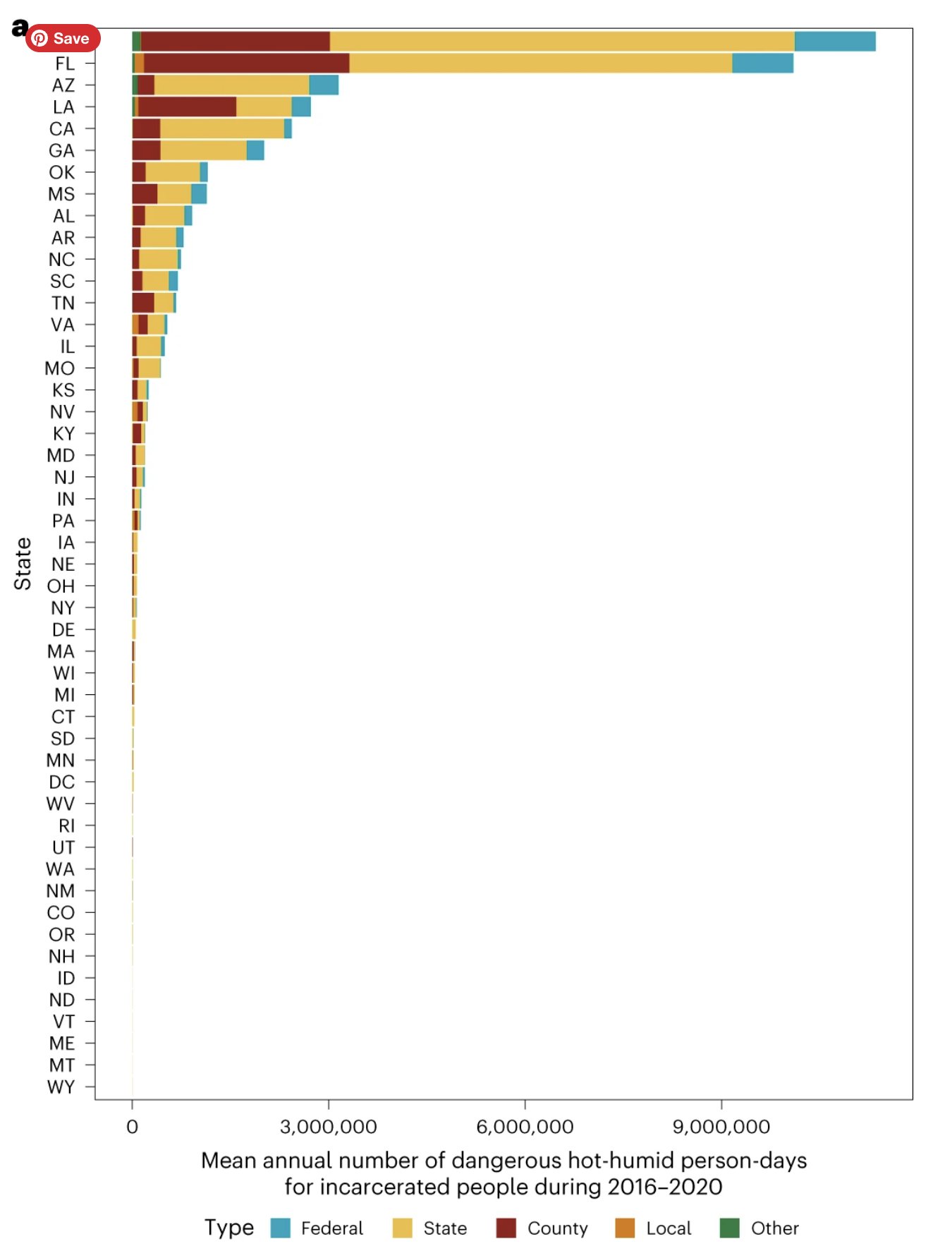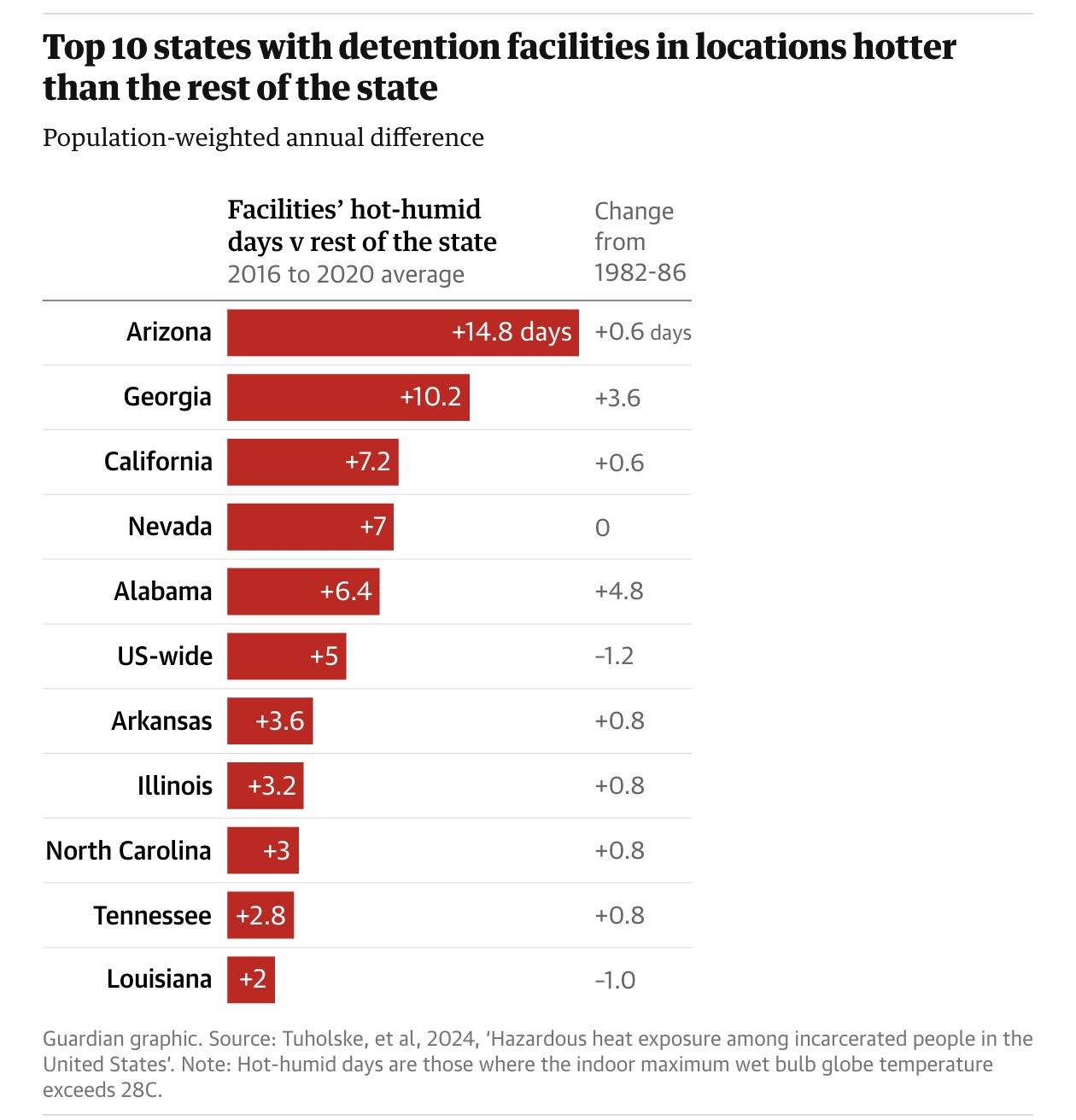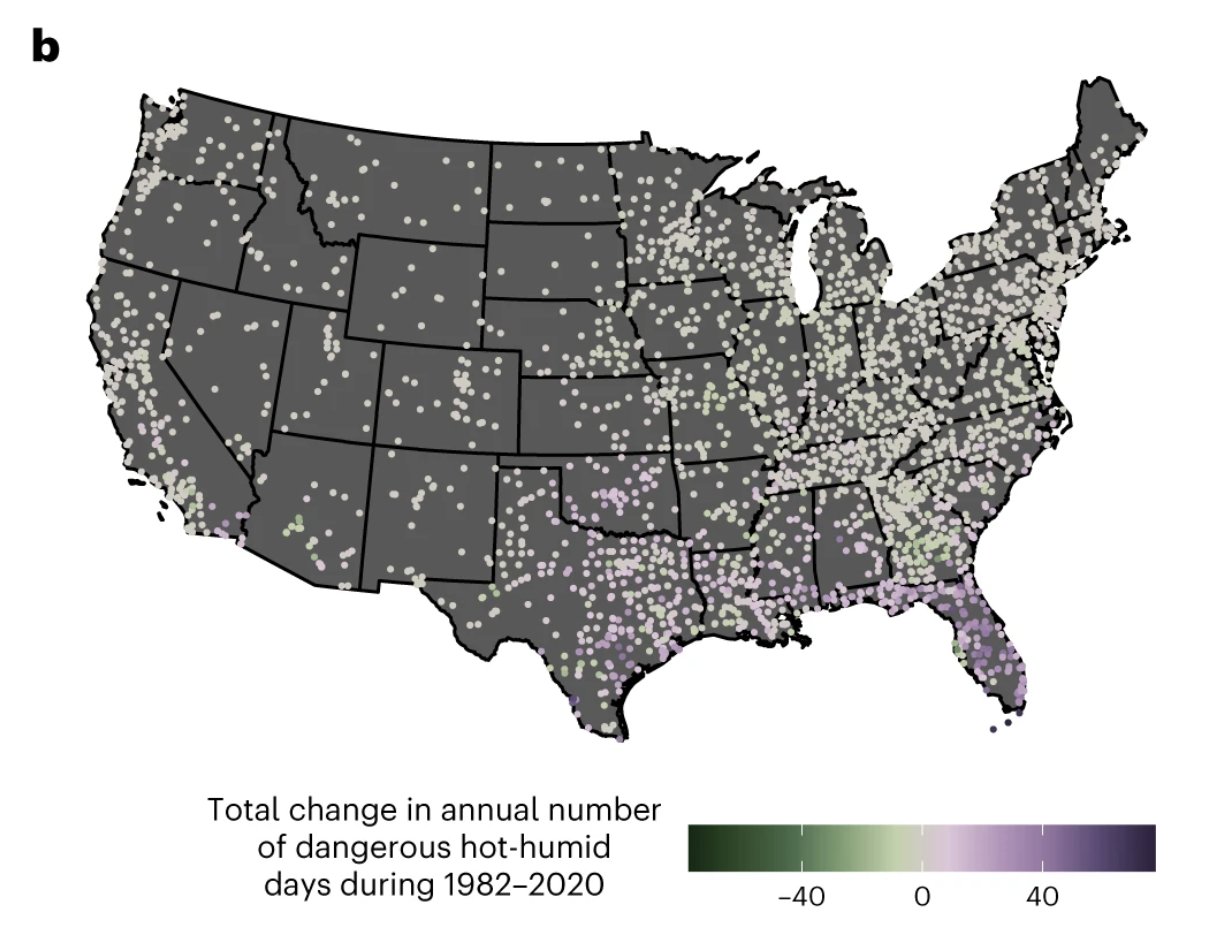Hazardous heat widespread in U.S. jails and prisons; worsened by climate change
Published: March 26, 2024
This article is adapted from an X thread by study co-author Robbie Parks (@rmiparks), and highlights findings from the study Hazardous heat exposure among incarcerated people in the United States (Nature Sustainability, 2024) by Cascade Tuholske, Victoria D. Lynch, Raenita Spriggs, Yoonjung Ahn, Colin Raymond, Anne E. Nigra & Robbie M. Parks)
In a recent study published in Nature Sustainability, researchers highlighted a concerning reality regarding the hazardous impact of heat exposure among incarcerated individuals in the United States.
Drawing from extensive data and analysis, the study underscores the alarming vulnerability of this population to extreme heat conditions within correctional facilities. The findings reveal a profound disparity in heat-related risks faced by incarcerated people, highlighting the urgent need for enhanced mitigation strategies and policy interventions to address this pressing public health issue.
In their paper – Hazardous heat exposure among incarcerated people in the United States – the authors evaluated recent exposure to and the trends of potentially hazardous heat conditions during 1982–2020 for all 4,078 operational and populated carceral facilities in the continental United States.
Why take on this study?
Climate change is predicted to increase the frequency of potentially hazardous heat conditions across the United States, putting the incarcerated population of 2 million at risk for heat-related health conditions.
Where is this happening?
More than half of all dangerous heat stress was in Florida and Texas. The estimated 145,240 people in Texas and 98,941 in Florida housed in state-run carceral facilities accounted for 52% of exposure (28 percent in Texas, 24 percent in Florida).

How much worse is the heat in areas where detention facilities are located?
Areas with jails and prisons experienced ~5 more dangerous humid heat days annually compared to other locations. Facilities in Arizona experienced the greatest disparity. Since jails and prisons are usually placed in locations in low-income communities or far away in rural environments with cheap land, this results in detention facility conditions which are at the mercy of extreme weather and urban heat island impacts.

What’s happening over time?
Nearly a million incarcerated people are housed in facilities seeing an increase in dangerous humidity and heat.
Why should we care?
Incarcerated people have few options to reduce the impact of hazardous heat, and these marginalized communities are often disproportionately susceptible to the effect of heat exposure given pre-existing health conditions.
What can be done?
Mandating cooling infrastructure and indoor temperature requirements is a pressing concern, particularly for carceral facilities in the southern and southwestern United States. These regions have experienced a notable increase in hazardous heat days since the 1980s, exacerbated by the effects of climate change. This rise in extreme temperatures poses a double burden for states in these areas, which not only have some of the highest rates of incarceration in the country but also face disproportionate impacts from climate change.
In addition to the challenges faced by carceral facilities in warmer regions, those in temperate areas also encounter hazardous heat conditions, albeit to a lesser extent. However, the lack of acclimatization to extreme heat among incarcerated populations in these regions could compound the health risks. This highlights the urgency of implementing measures to protect individuals in these facilities from dangerous heat exposure.
This issue is not only a matter of public health but also intersects with environmental and racial justice concerns. Carceral facilities house a disproportionately high number of people of color, and the prison population is aging, making them particularly vulnerable to heat-related illnesses. Addressing heat exposure in these settings is therefore crucial for mitigating health disparities.
One significant obstacle in addressing this issue is the lack of access to comprehensive data on indoor temperatures and cooling infrastructure in carceral facilities. Without this information, estimates of heat stress are likely to be underestimated, hindering effective policy-making and intervention efforts. Future research should prioritize filling these data gaps and incorporating health data to better understand and mitigate the impacts of heat on incarcerated populations, especially considering the projected exacerbation of heat conditions in these facilities due to climate change.

Further reading:
- Hazardous heat exposure among incarcerated people in the United States. Cascade Tuholske, Victoria D. Lynch, Raenita Spriggs, Yoonjung Ahn, Colin Raymond, Anne E. Nigra & Robbie M. Parks. Nature Sustainability (2024)
- The Guardian. Prisoners in Texas and Florida face biggest risk of increasingly deadly heat

